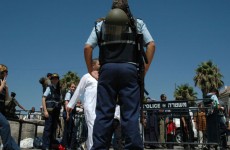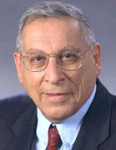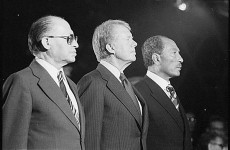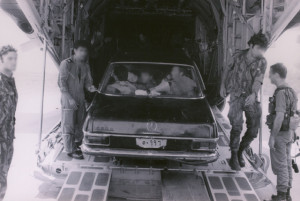
Operation Entebbe, also known as the Entebbe Raid or Operation Thunderbolt, was a counter-terrorism hostage-rescue mission carried out by the Israel Defense Force at Entebbe Airport in Uganda on the early morning of July 4, 1976. In the wake of the hijacking of Air France flight 139 and the hijackers’ threats to kill the hostages if their prisoner release demands were not met, a plan was drawn up to airlift the hostages to safety.
On June 27, 1976 Air France flight 139 with 246 passengers travelling from Ben Gurion Airport to Paris via Athens was hijacked by Arab terrorists who boarded during the Athens stopover. The hijackers, armed with guns and grenades, ordered the plane to divert to Benghazi, Libya for refueling. There one passenger, a young, pregnant worman, was allowed to leave the plane. The plane then took off again and flew south to Entebbe, Uganda, where it landed at 3:15 local time on the morning of June 28.
The hijacking turned out to be a collaborative effort between Dr. Wadia Hadad’s Popular Front for the Liberation of Palestine (PFLP), a branch of the Palestine Liberation Organization (PLO), and the Ugandan dictator Idi Amin. Once at Entebbe, the passengers were moved to the Old Terminal building, guarded by Ugandan soldiers and local PFLP terrorist operatives in addition to the hijackers themselves.
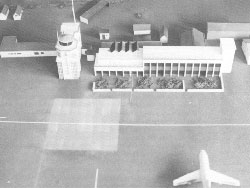
As diplomatic efforts involving the French, owners of the aircraft, and the Israelis were gearing up to work toward a release of the hostages, the IDF started to make contingency plans. By the end of the day on June 29, a list of demands was received from the terrorists, via Paris, calling for release of 53 convicted terrorists held in Israel, France, Germany, Switzerland and Kenya. A second message from the terrorist hijackers set 14:00 hours, Israel time, on Thursday, July 1 as a deadline. If their demands were not met, the terrorists threatened to blow up the plane and its passengers.
As IDF planning for a rescue operation was authorized by the Israeli government and round-the-clock preparations began in Israel, the Israeli hostages were separated from the others at Entebbe. Forty-seven of the non-Israeli group were released onto an Air France plane; the French Captain and his crew from flight 139 refused to leave without all their passengers. The released group were interrogated on their return to Europe to gain information about the circumstances at Entebbe; they confirmed that the Ugandans were active partners in the hijacking.
By July 1 the Israeli plans had solidified on a rapid air assault, extraction, and withdrawal operation. By good fortune, plans to the Old Terminal building were located at an Israeli building contractor. However, to gain time the Israeli cabinet voted to start negotiations with the terrorists. The PFLP extended the ultimatum to 14:00 hours on Sunday, July 4. By the end of the day on July 1, the rescue operation was fleshed out by IDF planners and the risky plan was deemed feasible. The Defense Minister approved the preparation of operational orders; Brig. General Dan Shomron was appointed to command the operation on the ground. A model of Entebbe was built to aid the planning.
A second group of 101 non-Israeli hostages arrived in Paris, leaving only Israelis and Jews still in the terrorists’ hands, 105 men, women and children. The smaller group made it somewhat easier to plan their rescue, but also raised doubts about the sincerity of negotiations. The terrorists were taking the position that they were not interested in negotiation – only in total satisfaction of their demands.
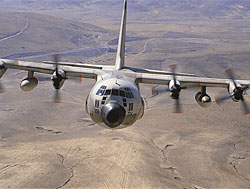
The operational plan took shape: five C-130 Hercules aircraft for the 200 man assault force, two Boeing 707s for medical and communications teams, a black Mercedes limo plus some Land Rovers to trick the Ugandan guards. The IDF pilots practiced landing the aircraft and operating in the dark late into the night of July 2.
On Saturday, July 3, shortly after dawn, the combat units loaded their equipment, and drove on deserted roads to a nearby airbase, where ground crews loaded them and their vehicles securely in the cargo space of the C-130s. IDF doctors and medical orderlies were loaded on board the “hospital” Boeing 707. At 13:20, they were airborne, southbound for Ophir at the tip of the Sinai peninsula, where they refueled and then headed for Entebbe. With the planes already in the air, the full Israeli cabinet met and gave final approval.
Flying the long path over Africa, through stormy weather, the C-130s reached their destination and touched down at Entebbe at 23:01, only seconds off the preplanned schedule. The rear ramp of the plane was already open, and the vehicles were on the ground and moving away before the Hercules rolled to a stop. A handful of paratroopers dropped off the still-moving plane to place emergency beacons, in case the control tower turned off the runway lights.
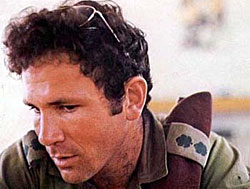
The Mercedes, and its escorts, took the road to the Old Terminal, moving consistent with the appearance of a senior officer’s entourage. They were confronted by two Ugandan sentries who shouted an order to stop, but they were immediately shot by the fast moving Israelis. The first assault team jumped from the car and ran the last 40 yards to the walkway in front of the building, then entered and quickly ended all resistance, taking only a few IDF and hostage casualties. A second assault team took out off-duty terrorists and Ugandan guards. One of the few IDF casualties was Lt. Col. Yoni Netanyahu, brother of the Israeli Prime Minister Benjamin Netanyahu, fatally shot by a sniper.
The assault on the Old Terminal building was completed within three minutes after the lead plane landed. Once all five planes were on the ground, IDF armored personnel carriers deployed to take up positions around the airport. Infantrymen ran to secure all access to roads to the airport and to take over New Terminal and the control tower. Heavy fuel pumps were taken off one of the planes to refuel from Entebbe’s own tanks for the return trip.
The hostage passengers and crew of Air France 139 were evacuated onto IDF planes within seven minutes, along with the Israeli dead and wounded. The Old Terminal building was left deserted except for the dead bodies of the eight hijackers. As the planeload of hostages took off, the IDF infantry destroyed Ugandan MiGs on the ground to prevent any pursuit. The paratroops reloaded their vehicles and equipment and the last IDF plane was airborne at 00:40, July 4.
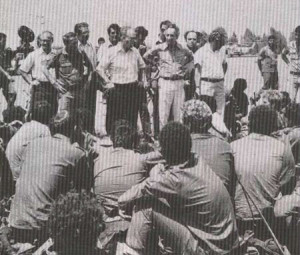
The IDF planes were able to land at Nairobi, Kenya where arrangements had been made at the last minute to refuel. The Kenyan’s gassed up the Israeli planes like they were normal commercial flights and soon all were airborne again on the way back to Israel.
The news beat them home. Reporters in Uganda became aware of a fire-fight at Entebbe and filed stories to the European media. It was already a headline on Paris radio and the BBC as the planes made their way home. By the time they reached Israel, on July 4, 1976 the country and the free world was electrified by excitement over what the IDF had done. A few hours later, the IAF Hercules touched down at Ben Gurion International Airport, rolled to a stop and opened its rear ramp to release its precious cargo of men, women and children into the the outstretched arms of their relatives and friends, accompanied by the cheers of a crowd of thousands.
One hostage, Mrs. Dora Bloch, was not rescued because she had been taken to a hospital in Kampala. She was subsequently murdered on Idi Amin’s orders.
The unexpected daring and impossible logistics made the raid a complete surprise, and a great success. It was a setback for terrorists everywhere since it showed that a determined nation could successfully mount counter-operations to defeat them with no gain for the terrorists at all. The success also weakened the dictator Idi Amin by emboldening Amin’s opponents. Sabotage and resistance increased and by 1979 he was deposed.


